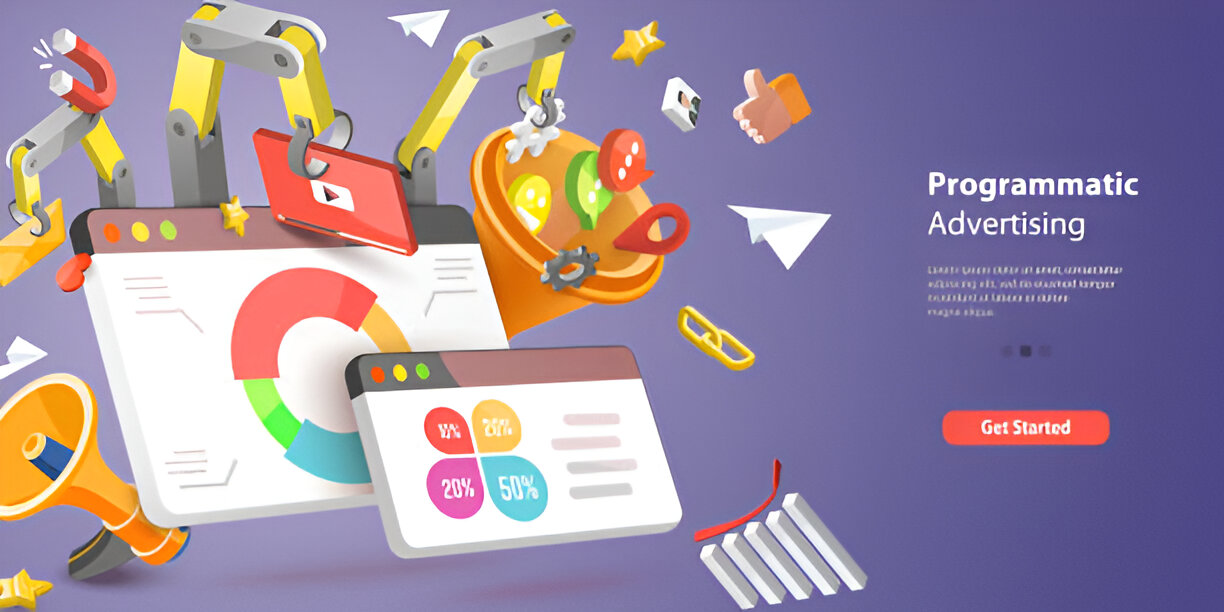As Amazon’s advertising ecosystem continues to grow, sellers and brands are looking for smarter and more scalable ways to reach customers. While Sponsored Products and PPC (Pay-Per-Click) campaigns remain important, many advertisers are now turning to Amazon DSP (Demand Side Platform) for more advanced and strategic marketing. In this article, we will explore how Amazon DSP works, its benefits, and how sellers can use it to grow their business beyond traditional PPC campaigns.
What is Amazon DSP?
Amazon DSP is a programmatic advertising platform that allows advertisers to buy display, video, and audio ads both on and off Amazon. It helps brands target audiences across the web using Amazon’s powerful shopper data. This means your ads can appear on Amazon-owned sites (like IMDb, Twitch) and thousands of third-party websites and apps.
Key Features of Amazon DSP:
- Audience-based targeting using Amazon’s first-party data
- Ads shown both on and off Amazon
- Retargeting and re-engagement capabilities
- Supports multiple ad formats (display, video, audio)
- Detailed reporting and metrics
Why Use Amazon DSP Instead of PPC?
Amazon PPC focuses mainly on search-based advertising — targeting keywords that shoppers type into Amazon’s search bar. While this is effective, it’s limited in reach. Amazon DSP, on the other hand, is about targeting audiences based on behavior, interest, and shopping patterns — not just keywords.
Benefits of Amazon DSP:
- Broader Reach: Reach potential customers off Amazon.
- Retargeting: Re-engage shoppers who viewed your products but didn’t buy.
- Brand Awareness: Promote your brand to new audiences.
- Advanced Audience Targeting: Use Amazon’s first-party data for high-precision targeting.
- Creative Flexibility: Use rich media like video and animated banners.
How Amazon DSP Works
- Audience Targeting: With Amazon DSP, you can create audience segments based on:
- Shopping behavior
- Product interests
- Purchase history
- Demographics
- Lifestyle and preferences
Example: If someone frequently buys fitness equipment but hasn’t seen your brand yet, Amazon DSP can help you show them a display ad on a fitness blog or even on IMDb.
- Retargeting Shoppers: Retargeting is one of DSP’s most powerful features. If a customer clicks on your product but leaves without purchasing, DSP can show your ad to them later — across Amazon sites and other platforms.
- Lookalike Audiences: Amazon can build audiences that look similar to your existing buyers. This helps expand your reach to people who are likely to be interested in your products.
- Multi-Channel Advertising: With Amazon DSP, you’re not limited to Amazon. Your ads can appear on:
- Fire TV
- Kindle
- IMDb
- Third-party websites
- Mobile apps
Ad Formats Available in Amazon DSP
- Display Ads: These appear as banner or box ads on websites and apps.
- Video Ads: Ideal for storytelling, branding, and engagement.
- Audio Ads: Great for reaching audiences via streaming music or podcasts.
Real-Life Example: A skincare brand used Amazon DSP to retarget users who visited their product pages. They created a 15-second video ad showing product benefits. Within two weeks, they saw a 30% increase in conversions and a 40% drop in cost per acquisition compared to PPC alone.
How to Get Started with Amazon DSP
- Check Eligibility: Amazon DSP is available to both vendors and sellers. Self-service DSP is for advertisers with experience; otherwise, Amazon or an agency can manage campaigns.
- Define Goals: Are you aiming for awareness, consideration, or conversion? Your campaign setup will depend on this.
- Audience Segmentation: Identify your target audience and define custom segments using Amazon’s data.
- Creative Development: Design your display, video, or audio ads. Keep branding consistent and messaging clear.
- Campaign Setup: Choose ad placements, bid strategy, frequency cap, and budget.
- Monitor and Optimize: Use Amazon’s reporting tools to track performance and adjust bids, creatives, or targeting.
Tips for Success with Amazon DSP
- Use Dynamic E-commerce Ads: These adapt based on the shopper’s interest and behavior.
- Set Frequency Caps: Avoid overexposing your ads to the same users.
- A/B Test Creatives: Try different visuals and messages to find what works.
- Optimize for Different Devices: Ensure your ads look great on mobile, desktop, and tablet.
Differences Between Amazon DSP and Sponsored Display
While both tools offer audience-based targeting, there are key differences:
- Sponsored Display is simpler and managed within Seller Central.
- Amazon DSP offers deeper targeting and broader reach.
- DSP provides more detailed analytics and creative flexibility.
Semantic Keywords (included throughout the article): Amazon DSP, programmatic advertising, retargeting, audience targeting, first-party data, display ads, video ads, audio ads, Amazon advertising, Amazon display ads, Amazon campaign strategy, lookalike audiences, Amazon marketing, Fire TV ads, Kindle ads, Amazon PPC alternatives, Amazon customer data, dynamic ecommerce ads, frequency capping, bid optimization, ad placements, creative testing, campaign reporting, brand awareness, conversion tracking, customer journey, advertising budget, Amazon audience expansion, ad performance, product interest targeting, high-intent shoppers, ad impression tracking, DSP campaign setup, Amazon third-party ads, Amazon-owned sites, customer re-engagement, shopper behavior data, media buying, self-service DSP, managed DSP, off-Amazon advertising, audience reach, Amazon ad formats, shopping funnel, brand lift, Amazon remarketing, cross-channel marketing, retail media, Amazon Fire devices.
Advanced Strategies for Amazon DSP
- Geo-Targeting: Target users based on specific regions, cities, or ZIP codes. This is useful for location-specific promotions or events.
- Time-Based Targeting: Run ads during peak hours or days when your audience is most active. Analyze customer behavior to identify the best time slots.
- Behavioral Targeting: Reach users based on recent shopping and browsing behavior. For example, target those who looked at running shoes in the past week.
- Brand Safety: Use Amazon’s tools to ensure your ads don’t appear next to inappropriate content. This protects your brand reputation.
- Combining DSP with PPC: Use PPC for immediate search visibility and DSP for broader reach and retargeting. This full-funnel approach improves efficiency.
User Experience Example: A nutrition supplements brand used both PPC and DSP. PPC brought in direct traffic while DSP nurtured leads and retargeted window shoppers. The result? A 50% uplift in sales in one month.
Common Mistakes to Avoid
- Ignoring Reporting: Regularly check metrics like CTR, conversion rate, and ROAS.
- Targeting Too Broadly: Focused targeting leads to better engagement.
- Poor Creative Assets: Invest in quality visuals and clear messaging.
- Not Testing: Experiment with different audiences, creatives, and times.
Tracking and Measuring Success
Amazon DSP offers a full dashboard with metrics such as:
- Impressions
- Click-through rate (CTR)
- Return on Ad Spend (ROAS)
- Cost per thousand impressions (CPM)
- Cost per acquisition (CPA)
- Purchase rate
Use this data to refine your strategy and maximize ROI.
Conclusion
Amazon DSP opens up powerful advertising possibilities beyond traditional PPC. It helps sellers and brands reach new audiences, retarget past visitors, and drive sales both on and off Amazon. By using DSP strategically — with clear goals, sharp creatives, and precise targeting — businesses can achieve deeper customer engagement and better returns.
Whether you’re looking to grow brand awareness or improve conversions, mastering Amazon DSP gives you a significant competitive edge in today’s digital marketplace.
FAQ:
1. What is Amazon DSP?
Amazon DSP (Demand Side Platform) is an advertising platform that allows brands to programmatically buy display, video, and audio ads both on and off Amazon. Unlike traditional PPC, DSP focuses on audience targeting, brand awareness, and retargeting across Amazon-owned sites and third-party websites.
2. How is Amazon DSP different from Amazon PPC?
Amazon PPC (Pay-Per-Click) targets shoppers actively searching on Amazon, while Amazon DSP targets audiences based on behavior, interest, and demographics across a broader network, including external websites. DSP also supports video ads and allows for more advanced audience segmentation.
3. Who can use Amazon DSP?
Amazon DSP is available to both Amazon sellers and non-sellers. Brands, agencies, and advertisers can use DSP if they meet Amazon’s budget thresholds. While self-service DSP is available, many opt for Amazon-managed services for expertise and access.
4. What are the benefits of using Amazon DSP for retargeting?
Amazon DSP enables advertisers to re-engage audiences who viewed but didn’t purchase, added to cart, or interacted with a product detail page. This precision retargeting increases conversion rates and reduces cart abandonment by showing relevant ads across devices and platforms.
5. Can I use Amazon DSP to reach new audiences?
Yes. DSP helps brands expand their audience by targeting lookalike audiences, behavioral segments, in-market shoppers, and users with relevant purchase intent—even outside Amazon—by leveraging Amazon’s rich consumer data.
6. Where do Amazon DSP ads appear?
Amazon DSP ads appear across Amazon-owned properties (like Amazon.com, IMDb, Fire TV), Amazon Publishing Partners, and thousands of third-party websites and apps. This broad reach supports both on-site and off-site brand visibility.
7. What types of ads can be created using Amazon DSP?
Amazon DSP supports display banners, video ads (in-stream and out-stream), dynamic eCommerce creatives (automatically updated with product info), and audio ads. These formats allow for multi-channel brand storytelling and conversion-focused campaigns.
8. Is there a minimum budget requirement for Amazon DSP?
Yes. Amazon-managed DSP typically requires a minimum spend of $35,000. However, self-service DSP via an agency or authorized partner may offer lower budget thresholds, making it accessible for smaller brands.
9. Can Amazon DSP campaigns track performance metrics?
Absolutely. Amazon DSP provides detailed analytics, including impressions, clicks, conversions, view-through rates, and new-to-brand metrics. These insights help advertisers evaluate ROI and optimize campaigns based on performance data.
10. How do I get started with Amazon DSP?
To start with Amazon DSP, you can either partner with an Amazon DSP agency or apply for Amazon-managed service if your budget qualifies. Alternatively, you can access self-service DSP through third-party partners, allowing you to run, manage, and optimize campaigns independently.





